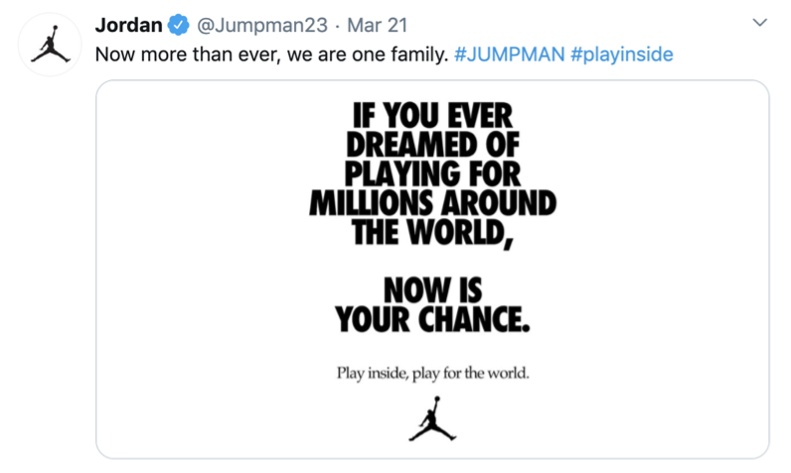Six Marketing Trends to Power Through 2021
Last year’s challenges pushed brands to adapt to a new normal and innovate in order to capture consumers’ attention. As we emerge from 2020 and with the year ahead hinting at comparable uncertainties, we can look at the past twelve months to anticipate certain marketing trends that will shape the industry for years to come.
Read on to discover the top six trends and how marketers recalibrated their campaigns to align with developing trends.
Marketing Trends for 2021
1. Back to Nature
Consumers are increasingly focused on wholesome living and healthy eating. Brands that build on the use of responsibly-sourced material will lead their industries.
Burger King’s The Moldy Whopper campaign is a great example of a brand that listens to people’s concerns. Just as conversations were going around about produce that sits in fridges for months without rotting, Burger King released this beautiful commercial addresseing the topic.
2. Brand Collaborations
According to a recent report by Deloitte, four out of five consumers are able to remember brands that responded positively to the pandemic, while more than 25% of consumers who perceived brands as acting in their self-interest walked away from them.
Last year saw rival brands reducing their competitive spirit and supporting each other instead. Lifebuoy “campaign” is a prime an example of brands choosing to do the right thing instead of competing for profit.

3. Privacy
This trend has existed prior to 2020 and will continue way beyond 2021. Consumers today are increasingly aware of the power of data, and therefore keeping their privacy even closer to the chest, or at least attempting to.
The recent backlash against WhatsApp changing its privacy policy is just the tip of the iceberg. A fan of the platform’s rival “Signal” spotted the opportunity and stepped in with this brilliant campaign.

4. Addressing Social Issues
The lockdown denied vulnerable members of society access to vital social support. The global community came together to remind us of others and helped spread awareness about social issues ranging from unemployment to domestic violence.
Ikea rode the wave with a campaign against domestic violence in the Czech Republic.
5. The Human Factor
According to a Gartner report, by 2022 one third of publicity budget dedicated for crisis communication will be used by brands in response to employees speaking out against them. Brands can preempt this trend by strengthening employee engagement and increasing employee satisfaction, turning them into their strongest advocates instead.
In this campaign, Carter’s shows the importance of the human factor by advertising the brand’s reliance on its employees during the pandemic.
6. User Experience
The global pandemic stroke was sudden. It left brands with only two choices: act immediately or risk your business. Sluggish websites are not an option, and staying away from social media is suicide. As consumers turned to digital as their channel of choice, brands that were not ready for the digital shift were in trouble.
Nike was one brand that utilized their social media channels and worked with sports celebrities to promote home exercise.

Do you need support to enhance user experience on your website? Get in touch.
Warning: Undefined variable $req in /home/sabacons/public_html/wp-content/themes/SabaConsultants/functions.php on line 131
Warning: Undefined variable $commenter in /home/sabacons/public_html/wp-content/themes/SabaConsultants/functions.php on line 132
Warning: Trying to access array offset on value of type null in /home/sabacons/public_html/wp-content/themes/SabaConsultants/functions.php on line 132
Warning: Undefined variable $aria_req in /home/sabacons/public_html/wp-content/themes/SabaConsultants/functions.php on line 132
Warning: Undefined variable $html_req in /home/sabacons/public_html/wp-content/themes/SabaConsultants/functions.php on line 132
Warning: Undefined variable $req in /home/sabacons/public_html/wp-content/themes/SabaConsultants/functions.php on line 133
Warning: Undefined variable $html5 in /home/sabacons/public_html/wp-content/themes/SabaConsultants/functions.php on line 134
Warning: Undefined variable $commenter in /home/sabacons/public_html/wp-content/themes/SabaConsultants/functions.php on line 134
Warning: Trying to access array offset on value of type null in /home/sabacons/public_html/wp-content/themes/SabaConsultants/functions.php on line 134
Warning: Undefined variable $aria_req in /home/sabacons/public_html/wp-content/themes/SabaConsultants/functions.php on line 134
Warning: Undefined variable $html_req in /home/sabacons/public_html/wp-content/themes/SabaConsultants/functions.php on line 134
Warning: Undefined variable $html5 in /home/sabacons/public_html/wp-content/themes/SabaConsultants/functions.php on line 136
Warning: Undefined variable $commenter in /home/sabacons/public_html/wp-content/themes/SabaConsultants/functions.php on line 136
Warning: Trying to access array offset on value of type null in /home/sabacons/public_html/wp-content/themes/SabaConsultants/functions.php on line 136